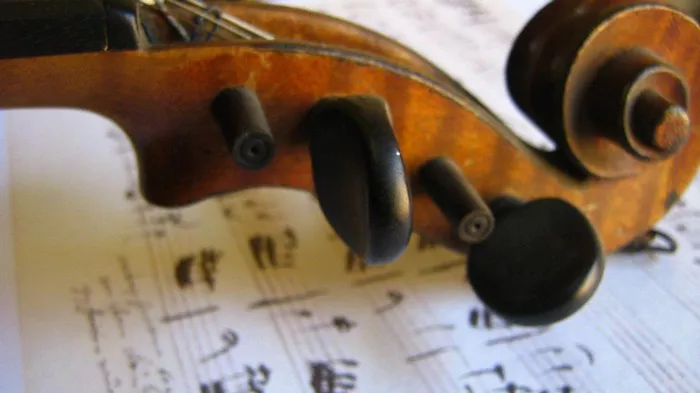Writing dramatic classical music requires a deep understanding of musical elements and the ability to evoke strong emotions in the listener. This guide will cover the essential steps and techniques to compose music that captures the drama and intensity often found in the works of great classical composers.
I. Understanding Drama in Music
Drama in music is about creating tension, excitement, and emotional depth. It’s the contrast between different musical ideas, dynamics, and expressions that keep the listener engaged. To achieve this, a composer must have a good grasp of various musical concepts.
1. Melody
A strong, memorable melody is the foundation of dramatic music. Here’s how to craft it:
Motif Development: Start with a short, simple motif. Develop it throughout the piece. Vary the rhythm, interval, and contour.
Wide Leaps: Use wide intervallic leaps to create tension and surprise.
Chromaticism: Introduce chromatic notes to add color and intensity.
Sequencing: Repeat the melody at different pitch levels to build momentum.
2. Harmony
Harmony adds depth and richness. Use it to enhance the drama of your melody.
Dissonance and Resolution: Alternate between dissonant and consonant chords. This creates tension and release.
Modulation: Change keys to create a sense of journey. Use unexpected modulations to surprise the listener.
Chromatic Harmony: Incorporate chromatic chords to add complexity.
Cadences: Use strong cadences to punctuate important moments. Mix perfect, plagal, and deceptive cadences.
3. Rhythm
Rhythm drives the music forward. It’s crucial for creating energy and excitement.
Syncopation: Displace the regular metrical accent to create a sense of unpredictability.
Polyrhythm: Use multiple rhythms simultaneously for complexity.
Changing Time Signatures: Switch time signatures to keep the listener on edge.
Rests and Pauses: Use silence to build anticipation.
4. Dynamics
Dynamics are essential for expressing emotion.
Crescendo and Decrescendo: Gradually increase and decrease volume to build and release tension.
Sudden Changes: Use subito dynamics for dramatic contrast.
Wide Dynamic Range: Explore the full dynamic spectrum, from pianissimo to fortissimo.
5. Orchestration
The choice of instruments and how they are used can greatly affect the drama.
Instrumental Color: Use different instruments to highlight emotional content. Strings for warmth, brass for power, woodwinds for color, percussion for impact.
Tutti and Soli: Alternate between full orchestra (tutti) and solo instruments (soli) to create contrast.
Doubling: Double instruments at the octave for added weight and intensity.
Extended Techniques: Use techniques like col legno, sul ponticello, and flutter-tonguing for unique effects.
6. Form
The structure of your piece is important for maintaining dramatic interest.
Sonata Form: Use sonata form for its dramatic potential. Exposition, development, and recapitulation provide a clear narrative.
Through-Composed: Compose continuously without repeating sections to keep the listener engaged.
Rondo Form: Use rondo form for its recurring theme and contrasting episodes.
7. Emotional Expression
Your music should tell a story and convey deep emotions.
Narrative Arc: Plan a narrative arc. Build up to a climax and resolve it.
Character Themes: Assign themes to different characters or ideas. Develop them throughout the piece.
Contrast: Use contrasting sections to highlight different emotions.
II. Analyzing Great Composers
Study the works of great composers to understand how they achieved drama.
Beethoven: Known for his powerful dynamics and dramatic contrasts.
Tchaikovsky: Master of emotional expression and orchestration.
Mahler: Expert in creating long, dramatic build-ups.
Shostakovich: Use of irony and sarcasm to convey deep emotions.
III. Practical Tips
Here are some practical tips to help you write dramatic classical music.
Sketch Ideas: Start by sketching your ideas. Don’t worry about details at first.
Experiment: Don’t be afraid to try new things. Experiment with different techniques and ideas.
Revise: Revise your work. Great music often comes from rewriting and refining.
Feedback: Get feedback from other musicians and composers. Listen to their suggestions.
See Also: 6 Classical Music Pieces Inspired by Swans: All You Want to Know
IV. Conclusion
Writing dramatic classical music is a complex but rewarding endeavor. By understanding and applying these concepts, you can create music that captivates and moves your audience. Remember to study the masters, experiment with different techniques, and always strive to express deep emotions through your music.
In the world of classical composition, drama is the key to creating a memorable and impactful work. Whether you’re composing a symphony, a concerto, or a solo piece, these principles will help you infuse your music with the drama and intensity that defines the great works of classical music.

